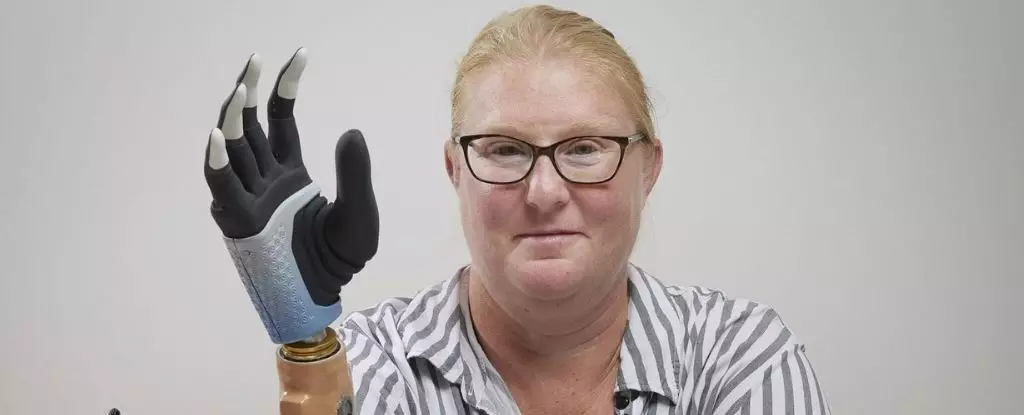A 50-year-old Swedish woman, Karin (whose full name is undisclosed), recently had her life transformed after receiving a cutting-edge bionic hand. Karin lost her hand in a farming accident twenty years ago and had been living without a right hand since then. However, thanks to revolutionary technology, she now has a limited sense of touch and can move all five of her bionic fingers individually with an impressive success rate of 95 percent. The bionic hand connects directly to the user’s bones, muscles, and nerves, creating a human-machine interface that utilizes artificial intelligence (AI) to translate brain signals into precise and simple movements.
After receiving the prosthetic hand, Karin can now carry out 80 percent of her usual daily activities, which were previously challenging or impossible for her. Simple tasks such as preparing food, picking up objects, and zipping and unzipping clothes or bags are now within her reach. Even turning door knobs or screws, which required intricate manipulation, are now manageable for her. The bionic hand has not only improved her functionality but has also alleviated her excruciating phantom pain. Karin described the pain as feeling like her hand was being subjected to a meat grinder. However, since receiving the prosthesis, her pain has decreased significantly, allowing her to rely less on medication. This transformation has truly changed Karin’s life for the better.
An international team of engineers, hailing from Sweden, Italy, and Australia, recently shared the success story of Karin’s bionic hand in the prestigious journal Science Robotics. This breakthrough marks the first time that a robotic hand with internal electrodes has demonstrated long-term viability for amputations below the elbow. Max Ortiz Catalán, a robotics engineer who led the research, believes that this technology holds immense potential for individuals facing limb loss. He describes the fact that Karin has been able to comfortably and effectively use her prosthesis in daily activities for several years as a testament to its life-changing capabilities.
Traditional prosthetic models have sensory electrodes on the outside, just under the “skin” of the robot. However, this setup has limitations, as it dilutes the quality and quantity of sensory signals, impairing control. Ortiz Catalán has spent the last decade developing a solution based on “osseointegration.” By placing an implant into a person’s bone, the bone cells grow tightly around it, creating a strong integration. The artificial limb can then be directly connected to the skeleton, allowing for the seamless integration of biology and electronics.
In Karin’s case, two implants were placed in her ulna and radius bones. A muscle graft from her leg was then connected to these implants, providing a reattachment point for the severed muscles and nerves in her arm stump. These muscle grafts also contained electrodes that amplified signals to the interface. By directly anchoring the prosthesis to the bone, researchers have found that it is significantly more comfortable for patients compared to conventional prostheses. Additionally, the embedded sensory electrodes inside the bionic hand enable consistent and reliable neural stimulation, enhancing grip precision by nearly four-fold compared to conventional models.
Developed by the Italian company Prensilia and funded by the European Commission, the prosthetic hand used by Karin is called the Mia Hand. This state-of-the-art technology represents a significant advancement in the field of bionic limbs. Its success in improving the functionality and reducing phantom pain for Karin showcases its potential to assist individuals with limb loss.
The success achieved by Professor Ortiz Catalán and his team of collaborators has generated immense excitement. Their ongoing development of next-generation bionic limb technology holds great promise, particularly in relieving phantom limb pain. The Bionics Institute’s CEO, Robert Klupacs, expressed his enthusiasm for the advancements made so far and highlighted the potential impact on amputees suffering from phantom limb pain.
Currently, Ortiz Catalán is continuing his work in Ukraine, providing expertise to amputees who have been affected by the ongoing war. By sharing his knowledge and advancements in bionic technology, he hopes to transform the lives of even more individuals and provide them with the opportunity to regain their independence and enhance their everyday experiences.


Leave a Reply